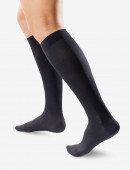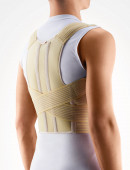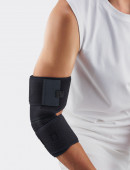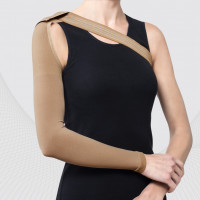Most often, oedema is related to swollen legs, yet due to different reasons it may also form in the legs. In less severe cases it is found by noticing the imprint left on the arm by a tight sleeve or an elastic band of a dress or a blouse, but in more severe cases oedema may cause different unpleasant feelings in the body.
Most often, oedema is related to swollen legs, yet due to different reasons it may also form in the legs. In less severe cases it is found by noticing the imprint left on the arm by a tight sleeve or an elastic band of a dress or a blouse, but in more severe cases oedema may cause different unpleasant feelings in the body.
What lymph is and the reasons for the development of disorders related to it
A common cause of the development of oedema are lymphatic disorders – lymphatic oedema or lymphostasis. Lymph is a translucent fluid, which circulates in the lymphatic system of the body. It is formed by the fluid in the intercellular space. The content of lymph is similar to blood. Lymph in the body is like a drainage system, removing different waste products, enhancing the removal of inflammation and malignant cells, as well as stimulating different beneficial processes. If lymph disorders appear, they cause different health disorders.
Causes of lymph flow disorders:
- venous incapacity,
- heart diseases,
- infections,
- surgery (especially for women, breast cancer surgery etc.),
- heredity etc.
How to notice lymphostasis in the hand
Lymphostasis in the hands for women is most often observed after breast cancer surgery or X-ray therapy of the armpit lymph nodes. It is important to know that in such cases oedema may develop both very soon after surgery or therapy, or in a year or even longer time period.
Signs of oedema in the hand after breast cancer surgery :
- feeling of heaviness, density on the side (hand, armpit, side) that was operated or X-rayed,
- increased volume of the hand,
- changes in the colour of the hand and its appearance etc.
Yet, one should know that similar signs may be symptoms of other diseases as well. If there is a feeling that an oedema has started to form, it is recommended to measure it regularly with a measuring tape. If the change is larger than two centimetres, one should seek medical help.
Treatment of lymphostasis
In cases of lymphostasis, the doctor evaluates each situation individually to apply the most appropriate treatment. It may include both medical therapy according to the specific disease, and physiotherapy or another type of help.
One of the most effective ways to reduce oedema in the hands is wearing medical compression sleeves on a daily basis. Both simple sleeves, and sleeves with a shoulder fastening and a fingerless glove have been developed. Developed specifically for these needs, the medical compression sleeves squeeze out the oedema with the power of compression and do not allow it to form and develop. The doctor helps to choose the aid. The use of compression sleeves may both be as additional therapy together with medical healing, and an independent method for reducing the oedema.
Also, in the case of oedema, diverse physiotherapy methods are recommended. The most popular of them is lymph drainage – both manual and with various special equipment. It is important to know that patients who have developed lymphostasis due to various health problems may have to monitor and correct it for their entire life.
Photo by Sincerely Media on Unsplash










